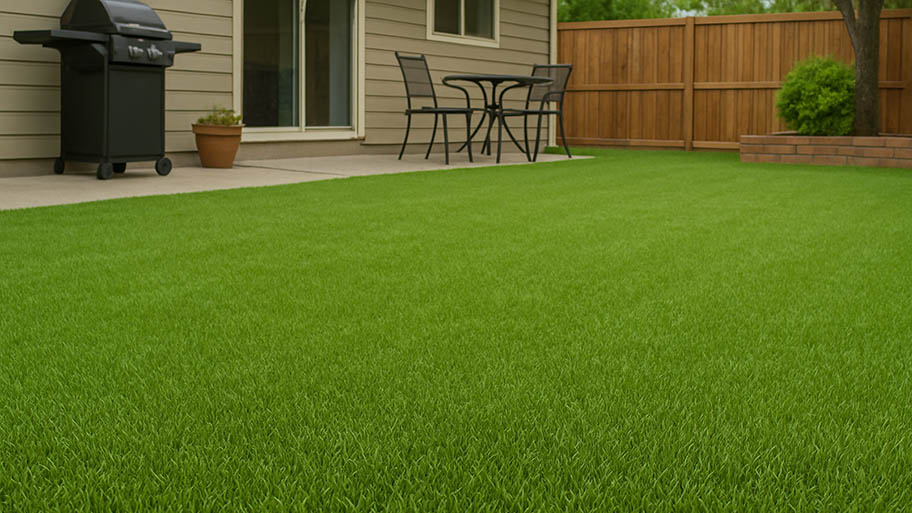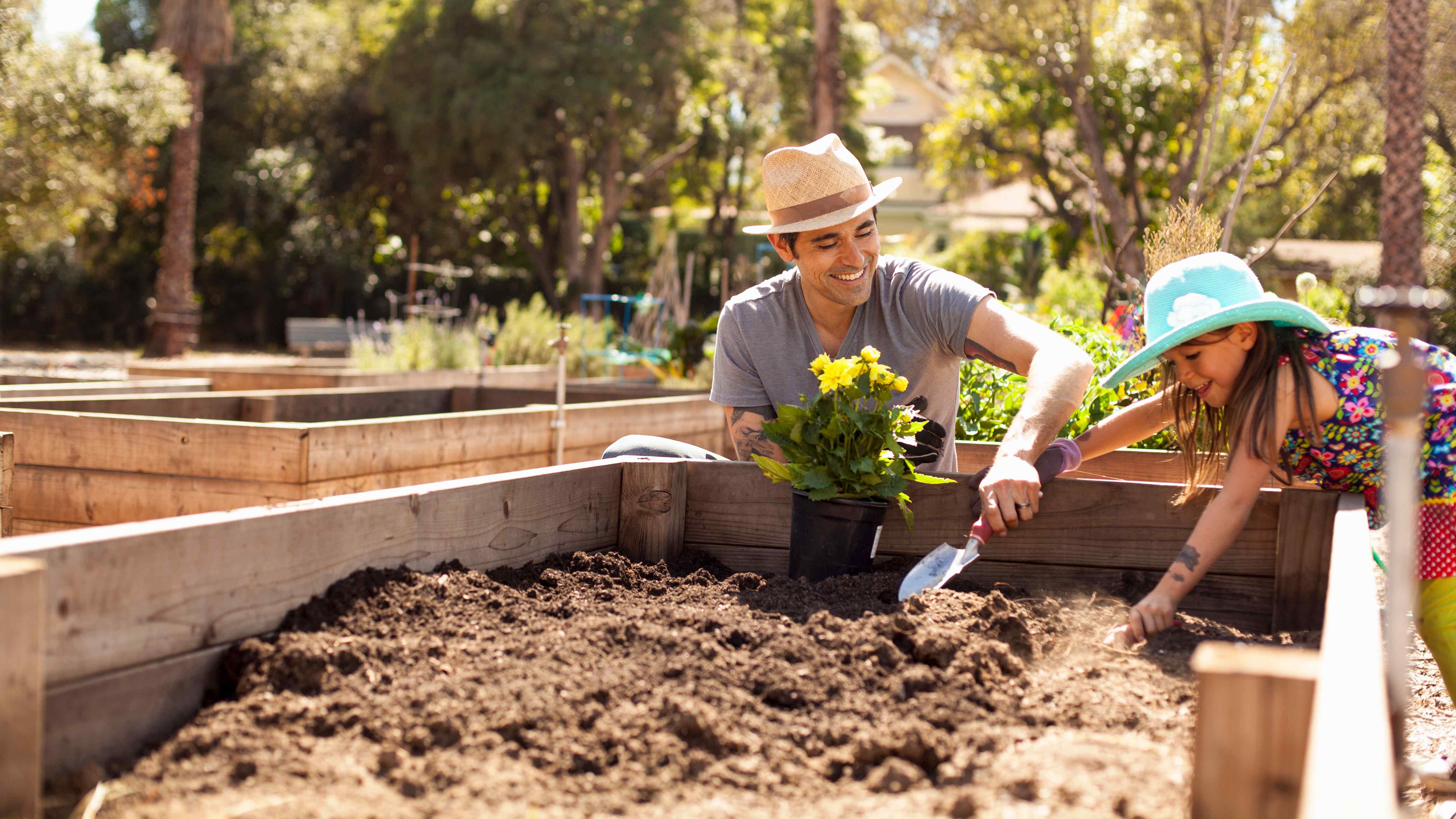
Your total lawn care cost depends on several factors, including the type of service and lawn size. Our guide will cover what you can expect to pay for lawn care.
Save water by monkeying around with monkey grass


Black mondo grass, creeping lilyturf, and big blue lilyturf are types of monkey grass.
All three monkey grass varieties are easy to grow and care for and are drought-tolerant.
Creeping lilyturf can take over your yard if allowed.
A popular choice for ground cover, monkey grass has long, green leaves and belongs to the lily family. There are three main varieties of monkey grass: mondo grass, creeping lilyturf, and big blue lilyturf. Each type is easy to care for and maintain and can survive even the driest, hottest weather conditions, making this a perfect grass for lawn maintenance newcomers or those who don’t have extra time to nurture a more demanding grass type.
Monkey grass should also be a top contender for anyone looking for a low-water landscape. Keep in mind, however, that this lawn cover can quickly become overgrown. If you don’t confine the grass with hardscaping or edging, it can spread and completely take over your yard in no time.
Monkey grass doesn’t look like traditional grass, at least not the kind you might picture on a suburban front lawn. It looks closer to a cross between lavender and some kind of fern, and to further complicate things, the term “monkey grass” is used to refer to three kinds of plants: Ophiopogon (black mondo grass) and two types of Liriope (lilyturf).
These plants are drought-tolerant and can withstand all kinds of harsh conditions, whether from deer galloping through your yard or severe weather. They spread quickly, produce bright flowers in the summer, don’t require fertilizer, and are happy in full sun or some shade. All three types of monkey grass are very popular in the South, and each one is a semi-evergreen perennial.
For the blooming botanists out there, the monkey grass taxonomy chart below can provide some extra insight into this fascinating grass species, which is native to Asia and was first introduced to the U.S. in Alabama and Florida in the mid-1800s.
| Kingdom | Plantae |
| Order | Asparagales |
| Family | Asparagaceae |
| Subfamily | Nolinoideae |
| Genus | Liriope |
| Species | L. muscari |

There are three plants that people sometimes refer to as monkey grass. Get to know important facts about all of them and choose the one that’s best for your home.
The U.S. Department of Agriculture has categorized each type below into its ideal hardiness zone, a rating for 11 different portions of the country based on their minimum yearly temperatures. Zone 1 represents the coldest region (mostly in Alaska), while Zone 11 is the hottest (mostly in Hawaii).
Black mondo grass appears as dense clumps of grass with pink-hued flowers that bloom from July through September. Compared to the lilyturf varieties, black mondo grass has thinner leaves with smaller flowers that often get hidden by the grass’s dense leaves.
Black mondo grass is an herbaceous perennial, meaning that it will live for more than two years and has non-woody stems that sprout above the ground. Additionally, this monkey grass variety belongs to the lily family, is native to Japan, and is a popular choice for rock gardens or as an edging plant. You should plant black mondo grass in the spring so it can get established before winter comes.
Zones: 7–11
Light: Full sun to partial shade
Soil: Slightly acidic with an ideal pH between 5.5 and 6.5
Water: Medium watering needs (once or twice weekly); do not overwater, but consistent moisture is welcome
Creeping Liriope belongs, perhaps surprisingly, to the asparagus family. It grows between 6 feet and 10 feet tall, with leaves that can extend up to 18 inches long. A perennial evergreen plant, creeping lilyturf’s flowers are white or violet-white and crop up on long, lavender-like stems during the hot summer months.
This variety spreads quickly and can invade your yard, so you should keep it to areas blocked off by hardscaping or edging at least 18 inches deep.
Zones: 4–10
Light: Full sun to partial shade
Soil: Well-drained with an ideal pH between 6.0 and 7.0
Water: One heavy watering per week
Native to China, Taiwan, and Japan, this evergreen tuberous perennial doesn’t spread as quickly as its sister plant above. Its flowers are more dramatic, extending over the plant’s leaves in eye-catching lavender color and eventually forming small black berries that are not edible by humans.
The royal purple monkey grass can grow up to 15 inches tall. Both types of Liriope make excellent weed suppressors and ground covers.
Zones: 5–10
Light: Full sun to partial shade
Soil: Well-drained with an ideal pH between 6.0 and 7.0
Water: One heavy watering per week
Here are a few tips to guide you as you begin your exciting journey of planting and maintaining monkey grass in your yard.
Plant your monkey grass in the spring to give it plenty of time to establish roots before the hot summer temperatures begin.
While monkey grass can handle many conditions, it prefers filtered sunlight to full shade. The grass is OK with direct sunlight from time to time, but its leaves will become pale with too much sunlight.
Both before you plant and while your monkey grass is getting established, remove all weeds in the area. This grass doesn’t like to compete for nutrients.
Dig 18 inches into the ground for your monkey grass, and place some organic compost into the hole before planting. Space the plants 6 to 10 inches apart.
Cut back or mow foliage to the ground before new shoots crop up. If you wait, the tips of your plants will be jagged and blunt and may not recover for a year.
If you’d like to propagate monkey grass, divide the roots every three years and plant the cut clumps into new spaces.
If you choose to plant creeping lilyturf, only do so where you can keep it contained, either through hardscaping or deep edging, as it spreads rapidly. Blue lilyturf is a nice choice for borders and walkways, while mondo grass looks lovely between pavers. Talk to a local landscaping company for a professional opinion on which type of monkey grass to plant where.
Once your monkey grass has successfully begun spreading, you won’t need to do much to it besides remove the occasional weeds and water it every so often to keep the soil moist. It’s a good idea to trim back your monkey grass to 3 inches, either with shears or a lawn mower, in late winter to early spring.
As for potential problems, keep a lookout for red spots on your plants, as these are a sign of anthracnose, a common fungal disease among shade plants. Remove the affected plants and apply a fungicide that contains azoxystrobin to help prevent an outbreak.
If you need to use a fungicide, always read all directions carefully before beginning, and don’t forget to put on safety equipment, including gloves, a mask, and eye protection. If the infection is too widespread, you may consider calling a lawn care pro near you to handle any big jobs.
You might also spot the occasional slug or snail munching on your monkey grass; if this happens, just pluck them off or use baited traps if they become serious pests.
C.E. Larusso contributed to this piece.
From average costs to expert advice, get all the answers you need to get your job done.

Your total lawn care cost depends on several factors, including the type of service and lawn size. Our guide will cover what you can expect to pay for lawn care.

The cost to renovate your lawn depends on the extent of the damage. Our guide will show you how much lawn renovation costs.

Artificial grass is a low-maintenance alternative to traditional turf. Learn how much artificial grass installation costs and what affects your price.

A lush moss lawn can be a beautiful, low-maintenance green space that thrives in extreme conditions with little effort.

How does your garden grow? With these nine tips for raised beds, they’re sure to be elevated—both in height and quality.

Hydroseeding can speed up grass growth and provide extra nutrients for your soil. Learn all about DIY hydroseeding and the steps to take for a great lawn.